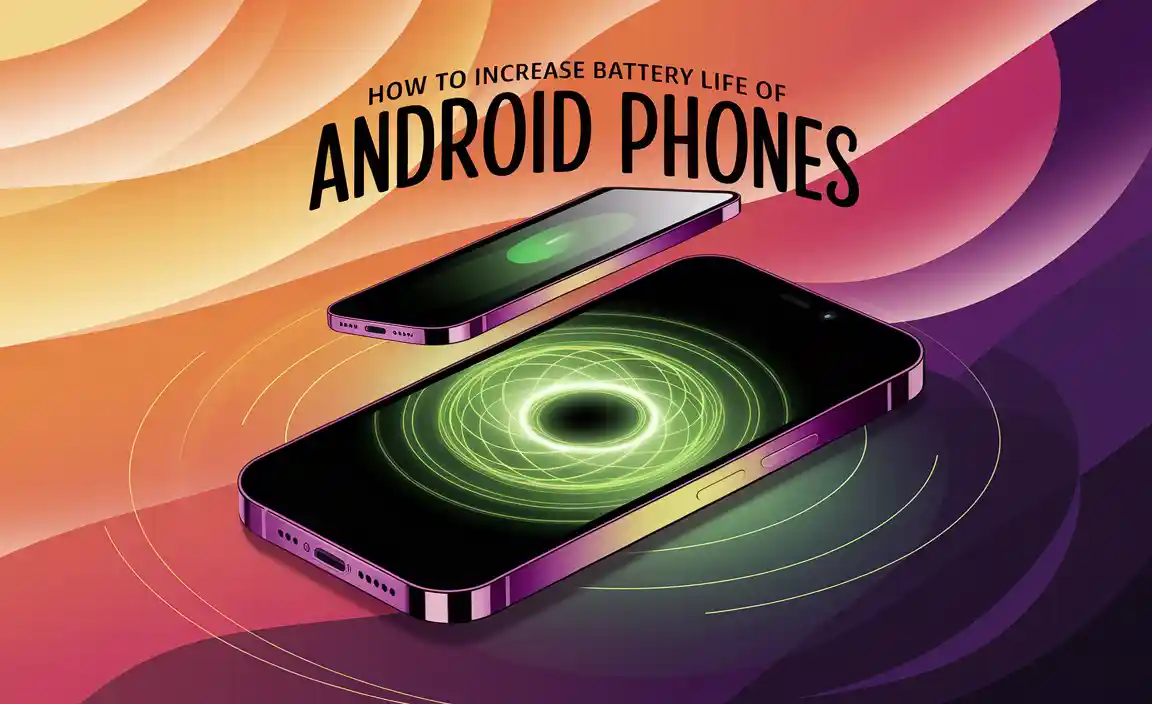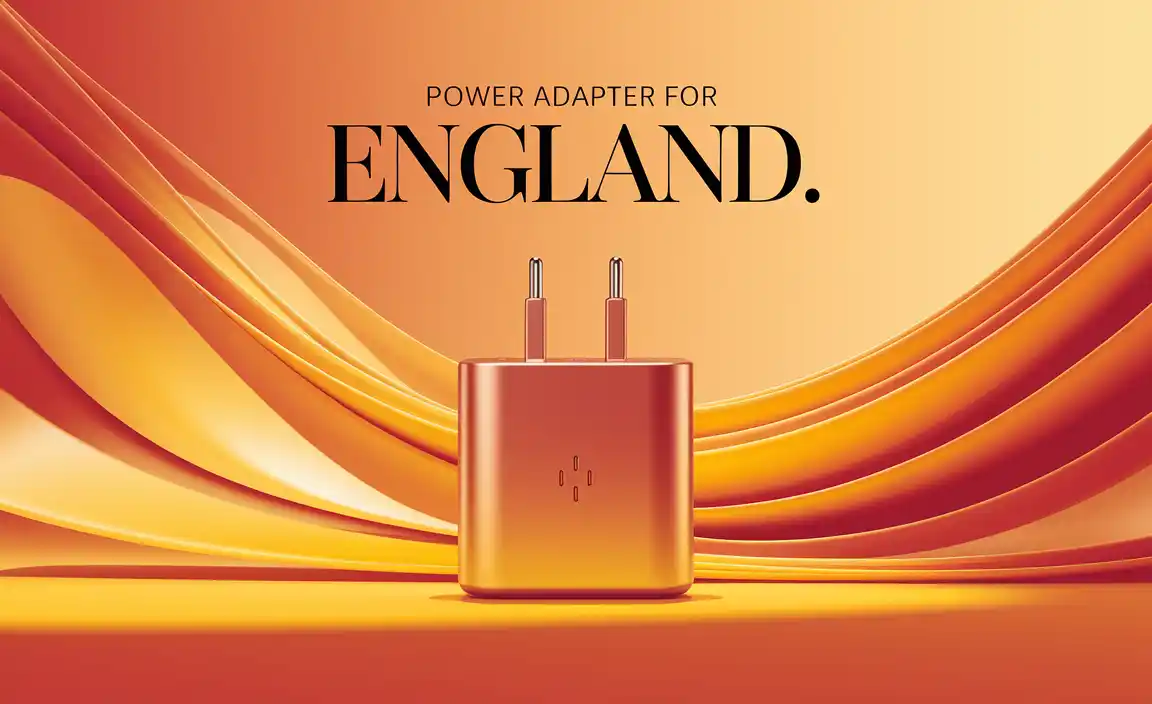Quick Summary: Preparing your 12v car battery for summer means ensuring it’s in top shape. Look for high Cold Cranking Amps (CCA) and reserve capacity, check for corrosion, and test its charge. A healthy battery prevents hot-weather breakdowns. This guide helps you pick the best 12v car battery for summer driving.
Summer heat can be tough on your car, and one of the hardest-hit parts is often the battery. You might not think about your car battery much, but when it’s hot, it works overtime. A weak battery can leave you stranded, especially when you’re trying to enjoy your summer. Don’t let a dead battery spoil your plans! This guide is here to help you understand exactly what you need to know to compare 12v car batteries for summer, making sure you stay powered up and on the road.
We’ll break down what makes a battery great for warm weather, how to check your current one, and what to look for when it’s time for a new one. No confusing tech talk here – just simple, practical advice to keep your car running smoothly all summer long.
Why Summer is a Crucial Time for Your Car Battery
When you think of car batteries, you often associate problems with the cold. However, summer heat poses a significant threat to your battery’s health. High temperatures can accelerate the chemical reactions happening inside the battery, leading to faster degradation of its internal components. Plus, when it’s hot, your car’s systems, like the air conditioning, work harder, drawing more power from the battery.
This increased demand, combined with the battery’s weakened state from the heat, creates a perfect storm for failure. A battery that might have limped through milder weather can suddenly give up when the mercury rises. Understanding this link is the first step to preventing unexpected breakdowns.
Understanding the Basics: What is a 12v Car Battery?
Your car runs on a 12-volt electrical system, and the heart of this system is the 12v car battery. Its main job is to provide the electrical power needed to start your engine. When you turn the key or push the start button, the battery sends a surge of energy to the starter motor. Once your engine is running, the alternator takes over, powering your car’s electronics and recharging the battery.
But a battery is more than just a starter. It also acts as a power reservoir for your car’s lights, radio, power windows, and all the other electrical accessories. Even when the engine is off, the battery supplies power to things like your car alarm and the clock.
Key Components and Their Role
A 12v car battery is a complex piece of equipment, but here are the main parts to know:
- Plates: These are made of lead and coated with lead dioxide. They are submerged in an electrolyte solution and work together to store and release electrical energy.
- Electrolyte: This is a mixture of sulfuric acid and water. It’s the medium where the chemical reactions happen, allowing electricity to flow between the plates.
- Terminals: These are the posts where you connect the battery cables. There’s a positive (+) and a negative (-) terminal.
- Separator: Thin, porous sheets between the plates that prevent them from touching and causing a short circuit, while still allowing the electrolyte to pass through.
- Casing: A durable container, usually made of plastic, that houses all the internal components and holds the electrolyte.
Why Summer Demands More From Your Battery
It might seem counterintuitive, but heat is a battery killer. Here’s why summer is so challenging:
- Accelerated Chemical Reactions: High temperatures speed up the chemical reactions inside a battery. While this sounds good for power output, it also means the internal materials break down faster. Think of it like overcooking food – the heat does its job, but too much and it’s ruined.
- Increased Water Loss: In some battery types (though less common now with “maintenance-free” designs), extreme heat can cause the electrolyte to evaporate more quickly. This can lead to the water level dropping, exposing the tops of the plates and causing damage.
- Higher Demand from Accessories: On hot days, your car works harder. The air conditioning system, especially, is a major power drain. More fans spinning, compressors running – it all adds up, putting extra stress on the battery to deliver consistent power.
- Engine Oil Viscosity: Hot engines mean thicker oil, which, while good for lubrication, requires more power from the battery to turn over the engine during startup.
What to Look For: Key Metrics for a Summer-Ready 12v Battery
When you’re looking to “compare 12v car battery for summer,” you need to focus on specific ratings that indicate its ability to perform under pressure. Don’t just grab any battery; understand what these numbers and terms mean.
Cold Cranking Amps (CCA) – Still Important for Summer!
You might think Cold Cranking Amps (CCA) is only for winter. While it measures a battery’s ability to start an engine in freezing temperatures, a higher CCA rating is still a good indicator of a robust battery. A battery with a higher CCA has more power reserves. This extra power is beneficial not just for cold starts but also for powering up all your accessories on a hot day, especially when the engine might be a bit sluggish to turn over after sitting in the sun. A good rule of thumb is to choose a battery with a CCA rating equal to or higher than what your car manufacturer recommends.
Reserve Capacity (RC)
Reserve Capacity (RC) is arguably more important for summer performance than CCA. RC measures how long your battery can operate essential accessories (like headlights, radio, and basic engine functions) at a standard discharge rate (25 amps) before its voltage drops too low to be useful. A higher RC means your battery can sustain power for longer periods without the engine running. This is crucial for those times you might be sitting in traffic with the AC blasting, or if you need to keep your electronics running while waiting for a friend on a hot day.
Think of it this way: CCA is for the initial jump-start burst, while RC is for sustained power delivery. For summer, you want a battery that excels in both, but RC gives you a better idea of its endurance in demanding, everyday situations.
Battery Types: What’s the Difference?
Most standard car batteries today are lead-acid batteries. However, there are different types designed for various needs:
- Flooded Lead-Acid (FLA): These are the most traditional type. They require maintenance, meaning you might need to check and top up the water levels periodically. While less common in new cars, they are usually cheaper.
- Enhanced Flooded Battery (EFB): A step up from FLA, EFBs are designed for vehicles with basic start-stop technology or those with higher electrical demands. They offer better cyclic durability (handling repeated charging and discharging).
- Absorbent Glass Mat (AGM): AGM batteries are a premium option. The electrolyte is absorbed into mats of fine glass fibers, making them spill-proof and vibration-resistant. They offer superior performance, longer life, and are essential for vehicles with advanced start-stop systems and high electrical loads. If your car came with an AGM battery, you must replace it with another AGM battery.
For summer, an AGM battery is often the best choice if your budget allows and your car supports it, due to its superior performance and reliability under stress. However, a good quality EFB or even a robust FLA can work well for standard vehicles.
How to Check Your Current Car Battery for Summer Readiness
Before you buy a new battery, it’s smart to check the health of your current one. Summer can expose existing weaknesses. Here’s how you can do a basic check:
Visual Inspection
This is the easiest first step. Grab a flashlight and look for:
- Corrosion: Check the battery terminals (the metal posts where the cables connect). If you see a white, blue, or greenish powdery substance around them, that’s corrosion. Corrosion can impede the flow of electricity, making your battery less effective.
- Cracks or Leaks: Inspect the battery casing for any signs of damage. Cracks or bulging can indicate internal damage or overcharging. If you see any leaks, the battery should be replaced immediately in a safe manner.
- Loose Connections: Ensure the battery cables are securely fastened to the terminals. Loose connections can cause intermittent power loss and charging issues. You can gently wiggle them to check for play.
If you see any significant corrosion, you can clean it. You’ll need a wire brush, some baking soda, and water. Mix baking soda with water to make a paste, gently scrub the terminals and cable clamps with the brush, then rinse with clean water and dry thoroughly. Be sure to wear gloves and eye protection. For a more detailed guide on battery maintenance, check out resources from the AAA.
Testing the Battery’s Charge and Health
A visual check only tells part of the story. To truly know your battery’s condition, you need to test its electrical performance.
a) Using a Multimeter:
This is a relatively simple and affordable tool. A multimeter measures voltage. With your engine off:
- Set your multimeter to DC Voltage mode (it will look like a ‘V’ with a straight line and maybe dashed lines above or beside it).
- Touch the red probe to the positive (+) terminal of the battery and the black probe to the negative (-) terminal.
- Read the voltage displayed.
Here’s what the readings generally mean:
- 12.6V or higher: Fully charged and likely in good condition.
- 12.4V: About 75% charged.
- 12.2V: About 50% charged.
- 12.0V or lower: Significantly discharged and may indicate a problem or a need for charging.
A healthy battery should read around or above 2.0V per cell (12V battery has 6 cells, 2V x 6 = 12V). If your battery consistently reads low, even after charging, it might be time for a replacement.
b) Using a Battery Tester (Load Tester):
A battery tester (or load tester) is a more comprehensive tool that simulates the demands of starting your engine. Many auto parts stores offer free battery testing. They connect a device that applies a load to the battery and measures its voltage under that load, giving a more accurate picture of its cranking power and overall health.
If their test shows your battery is weak or failing, it’s a good indicator that it won’t last through the heat of summer. They can often tell you if it’s just low on charge or if the battery itself needs replacing.
Comparing 12v Car Batteries for Summer: What to Look For in New Ones
When it’s time to buy a new battery, especially with summer approaching, focus on these factors to ensure you get the best performance for the heat:
1. Match Your Vehicle’s Requirements
This is non-negotiable. Your car’s owner’s manual will specify the correct battery group size, CCA, and RC requirements. Using a battery that’s too small (in physical size or electrical capacity) can lead to performance issues and damage. Ensure the new battery physically fits in the battery tray and the terminals are in the right position.
2. Prioritize Reserve Capacity (RC) for Summer
As mentioned earlier, RC is crucial for summer. Look for batteries with a higher RC rating. If your car manufacturer recommends a minimum RC, aim for a battery that meets or exceeds that. More RC means your battery can handle the electrical load of your AC, fans, and infotainment system without quickly draining.
Example: If your car manual recommends 120 minutes RC, look for batteries offering 130-150 minutes or more, especially if you live in a very hot climate or use your car’s accessories frequently when idling.
3. Consider a Reputable Brand and Warranty
When comparing brands, look for those with a solid reputation for reliability and good customer service. Major brands often invest more in quality control and research. A longer warranty period can also be a good indicator of a manufacturer’s confidence in their product’s longevity.
Warranties can vary significantly. Some are “free replacement” for the entire period, while others are “pro-rated” (you pay a portion of the cost based on how long you’ve owned it). A longer free replacement period is generally better.
4. Check the Manufacturing or “Date Code”
Batteries have a shelf life, and their performance degrades over time, even when unused. Look for a date code sticker on the battery. This code usually indicates the month and year it was manufactured (e.g., “05/23” means May 2023). Aim to buy a battery that is no more than 6 months old. Batteries sitting on the shelf for over a year may have already lost significant capacity.
5. AGM Batteries for Demanding Vehicles
If your car is equipped with start-stop technology, a high-end audio system, or other significant electrical demands, you’ll likely need an AGM battery. These batteries are designed to handle deep discharges and frequent cycling better than standard batteries. Always replace an AGM with another AGM; using a standard battery can lead to premature failure and damage to your vehicle’s electrical system.
Top 12v Car Battery Brands & Features for Summer (General Comparison)
While specific models change and availability varies, here’s a general look at how some popular battery brands stack up, focusing on features beneficial for summer. Always cross-reference with your vehicle’s specific needs.
| Brand (Examples) | Typical Strengths for Summer | Considerations |
|---|---|---|
| Optima (YellowTop, RedTop) | Excellent vibration resistance, high CCA and RC, deep cycle capability (YellowTop). AGM technology. Very durable. | Can be more expensive. Ensure it fits your vehicle’s terminal configuration. |
| Odyssey | Extreme durability, long service life, excellent deep cycling and starting power. AGM. High performance in extreme temperatures. | Premium pricing, needs specific charging methods to maximize lifespan. |
| DieHard (Gold, Platinum) | Good balance of features and price, often with high RC and solid CCA ratings. Platinum series are typically AGM. Good warranties. | Availability can vary by retailer. Check specific model specs. |
| ACDelco (Advantage, Professional, Gold) | Widely available, offer a range of performance levels from basic to AGM. Generally reliable with decent warranties. | Performance varies significantly by series (Advantage vs. Gold). Gold series are more robust for higher demands. |
| Interstate Batteries | Known for reliability and long lifespan. Often exceed OEM specifications. Good brand reputation. | Can sometimes be pricier than generic options. Availability through specific dealers. |
Important Note: The best battery for your car is the one that meets or exceeds your vehicle manufacturer’s specifications for group size, CCA, and RC, and is appropriate for your driving needs. This table is a general guide to common.




